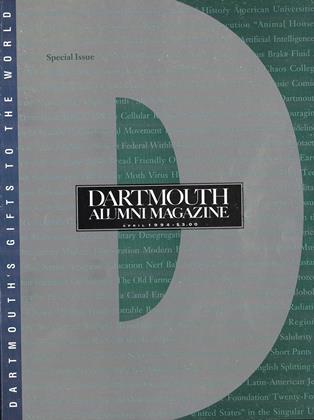For some 60 years Paul Zamecnik '33, DMS '34 has been unlocking the biochemical secrets of proteins, the building blocks of life. In the early fifties he devised a way of using dead cells to determine which cellular part is responsible for synthesizing proteins-a
key to understanding how DNA works. Zamecnik invented a "cell-free system"—a biochemical cocktail of ground-up cells to which specific amino acids can be added. Through this technique he discovered that amino acids are synthesized into protein in the minute cellular structures now known as ribosomes. His system also provided the cellular recipe used in breaking the DNA code.
It was Zamecnik who discovered in 1965 that transfer RNA was the missing link between the structure of DNA and the mechanics of protein production. Transfer RNA binds to amino acids and gives them DNA's instructions on forming proteins.
Zamecnik has found more recently that activating the formation of proteins is only one of transfer RNA's charms. It can also stop proteins from forming. Seizing upon this capacity, Zamecnik is experimenting with making what he calls "antisense DNA," strands of nucleicacid blockers that can be applied like velcro to specific segments of DNA to prevent noxious pieces of genes from being expressed.
In what may turn out to be the century's most welcome biochemical breakthrough, Zamecnik, still a full-time researcher at the Worcester Foundation for Experimental Biology in Shrewsbury, Massachusetts, is trying to use specially synthesized and targeted pieces of antisense DNA to interrupt the reproduction of such viral scourges as malaria, AIDS, and the flu. Antisense DNA compounds developed in his lab are already in clinical trials in France against the AIDS virus HIV-1.
 View Full Issue
View Full Issue
More From This Issue
-
 Cover Story
Cover StoryROSTER OF DARTMOUTH'S GIFTS TO THE WORLD
April 1994 -
 Article
ArticleThe Greatest Books by Dartmouth Authors
April 1994 -
 Class Notes
Class Notes1993
April 1994 By Christopher K. Onken, -
 Class Notes
Class Notes1981
April 1994 By Karen McKeel Calby, -
 Class Notes
Class Notes1989
April 1994 By Dan Parish, -
 Class Notes
Class Notes1983
April 1994 By Deborah Michel Rosch.







